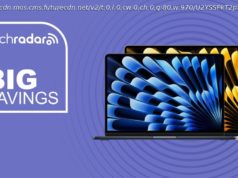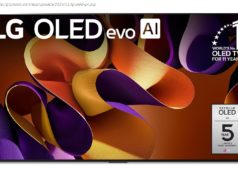Ultra-flexible digital audio software
Steinberg Cubase has a long and storied history. It first appeared in 1989 on the Atari ST before migrating to Macs and PCs. In 1996, Cubase also introduced the world to the VST virtual instrument standard. Decades later, Cubase Pro 13 (the version of Cubase reviewed here) remains a powerful, ultra-flexible recording and production environment. It’s particularly well suited for MIDI composition with virtual synthesizers—and is, in our opinion, the best of the major digital audio workstations (DAWs) at this. It’s also a capable audio editing and post-production tool. Thanks to its exceptional, redesigned MixConsole and even more flexible editing facilities, Cubase Pro is our Editors’ Choice winner for digital audio workstations on PCs. Apple Logic Pro retains the crown on the Mac side, while Avid Pro Tools is our Editors’ Choice for professional mix engineers and producers in larger studios.How Much Does Cubase Cost?
Cubase comes in three versions. The stripped-down Elements 13 ($99.99) offers 64 MIDI tracks, 48 audio tracks, and 24 instrument tracks of recording. It comes with Halion Sonic, Iconica Sketch, and Groove Agent SE 5, three instruments that together offer 1,000 sounds, plus 45 mix and effects plug-ins.
Artist 13 ($329.99) upgrades the track counts to unlimited and adds VariAudio pitch correction and track comping. It also adds Retrologue 2 and Padshop 2, and it brings the total to 2,600 sounds and 62 effects plug-ins. Artist also adds some audio and MIDI editing features. Pro 13 ($579.99), which is the full app and the version I tested, adds 256 VCA tracks, Dolby Atmos support with native integration of the Atmos renderer, Control Room for more flexible monitoring, a more advanced score editor, and plenty of mixing and mastering upgrades such as the ability to measure loudness and export stems. Pro—the version I review here—also comes with 3,400 sounds for the instruments and 87 effects plug-ins.Can My PC Run Cubase Pro?
Cubase requires either a 64-bit Windows 10 Version 22H2 or 11 22H2 PC or a Mac running macOS version 12 (Monterey) or above. PCs need at least a 4th Gen Intel Core i5 or AMD Ryzen CPU, 8GB RAM, 1,440-by-900 resolution, and up to 75GB free space for the Pro version; Macs also need an Intel Core i5 or any Apple silicon. For this review, I tested Cubase Pro 13.0.24 on two machines: an Acer Nitro 5 laptop with a 17.3-inch display, a Core i5-12500U processor, 32GB RAM, a 2TB SSD, and Windows 11, and a MacBook Pro 16-inch (Late 2021, M1 Pro) with 16GB RAM and a 1TB SSD running macOS Sonoma 14.4.1.Interface, Recording, and Editing
As soon as you boot up the program, Cubase Pro’s strong MIDI roots are evident. The Project Window gives you an overview of the arrangement and can be configured to show VST instruments, the Key Editor (piano roll), and more. The Key Editor is simply wonderful; you can do just about anything during playback, including switching editing tools, deleting notes, and adjusting other notes. The Inspector offers transpose, quantize, length, and other useful tools that are easier to access here than in competing sequencers. A lane across the bottom makes editing edit volume or other MIDI control data virtually instantaneous. The floating Transport Bar is fully customizable; it’s easy to pop in or out individual modules as needed.
The Lower Zone lets you lock the Piano Roll editor, Mix console, or anything else you want below the arrange window. By switching between cursor tools using the number keys and using Cubase’s various shortcuts that speed up workflow, I find it easier to play in, lay down, edit, and arrange MIDI clips with Cubase than with any other DAW. Dedicated buttons let you turn scrolling during playback on and off and even whether you want the view to stop scrolling when you start editing.
New for version 13, the Range tool now works in the Key Editor and Drum Editor. Editing multiple parts in the Key and Drum Editors is much easier now, too; you can highlight different tracks in the same window with the Visibility tab while the Track display shows an overview simultaneously. A new Channel Tab in the Project window lets you access the channel you’re currently editing without switching away, like what Logic Pro has had for years. And new Chord Pads help you find chord progressions you like, with presets that serve as starting points.
Steinberg really went all in on the workflow enhancements this time around. To wit: You can modify step note lengths on the fly and add voices with a new polyphonic note input feature. MIDI CCs can be recorded in ramps to make editing easier later. Starting playback is now possible from the cycle marker, last position, or selection. You can tap along to set the project tempo on the transport bar. Cubase 13 lets you zoom in and out vertically with the mouse wheel to either the transport or the current selection. MIDI plug-ins got a fresh coat of paint, and speaking of MIDI, Cubase 13 is already ready for MIDI 2.0 when it arrives with support for high-resolution velocity, CC, aftertouch, pitch bend, and polypressure data. Recording and Editing Audio
For recording audio, the 64-bit audio engine supports 5.






